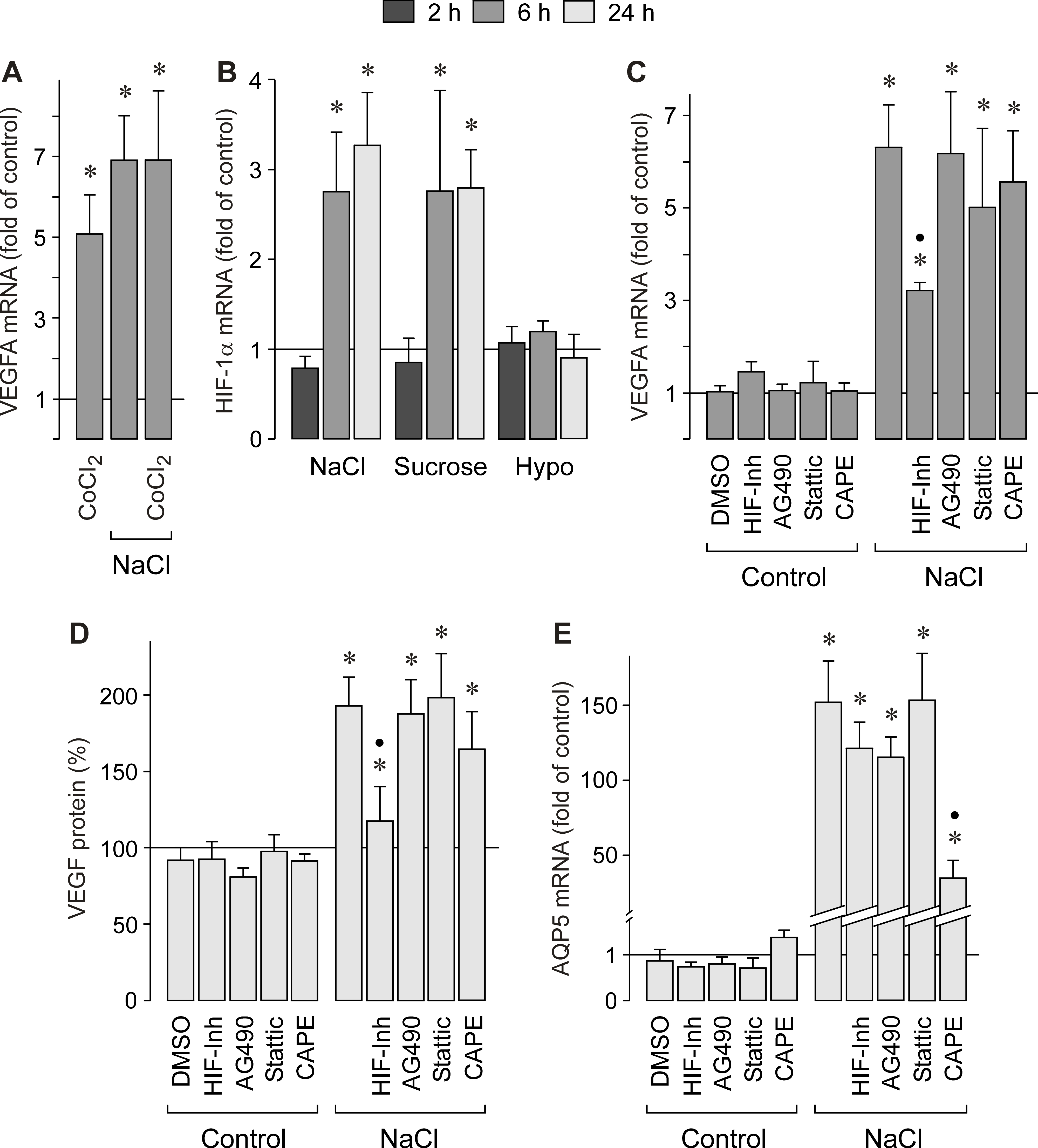Figure 8. The hyperosmotic induction of VEGF, but not of AQP5, depends in part on the activity of HIF-1. mRNA levels (A-C, E) were determined with real-time RT–PCR analysis in cells stimulated for 2, 6, and 24 h, and are expressed as folds of isoosmotic
unstimulated control. The level of VEGF-A165 protein (D) was determined with ELISA in the cultured media of cells stimulated for 24 h, and is expressed in percentages of isoosmotic
unstimulated control (100%, corresponding to 383.0±51.1 pg/ml VEGF). A. Effects of chemical hypoxia (150 µM CoCl2) and hyperosmotic medium (+ 100 mM NaCl) on the level of VEGF mRNA (n=6). B. Relative HIF-1α gene expression level in cells treated with hyperosmotic (+ 100 mM NaCl [n=8] and 100 mM sucrose [n=6], respectively)
and hypoosmotic (Hypo; 60% osmolarity) media (n=6). C. The hyperosmotic (+ 100 mM NaCl) upregulation of VEGFA was decreased in the presence of an HIF inhibitor (HIF-Inh; 5 µM; n=7). The JAK2 inhibitor AG490 (10 µM; n=5), the STAT3
inhibitor Stattic (1 µM; n=7), and the NF-κB inhibitor caffeic acid phenethyl ester (CAPE; 1 µg/ml; n=7) had no significant
effects. D. The hyperosmotic secretion of VEGF was inhibited by the HIF inhibitor (HIF-Inh; 5 µM; n=6), but not by AG490 (10 µM; n=6),
Stattic (1 µM; n=6), or caffeic acid phenethyl ester (CAPE; 1 µg/ml; n=6). E. Effects of the HIF inhibitor (HIF-Inh; 5 µM; n=6), AG490 (10 µM; n=6), Stattic (1 µM; n=6), and the NF-κB inhibitor caffeic
acid phenethyl ester (CAPE; 1 µg/ml; n=6) on the gene expression of AQP5. Vehicle controls were made with DMSO (1%; n=3 each).
Data are means ± SEM obtained in independent experiments performed in triplicate. Significant difference versus isoosmotic
unstimulated control: *p<0.05. Significant difference versus NaCl control: ●p<0.05.

 Figure 8 of
Hollborn, Mol Vis 2015; 21:360-377.
Figure 8 of
Hollborn, Mol Vis 2015; 21:360-377.  Figure 8 of
Hollborn, Mol Vis 2015; 21:360-377.
Figure 8 of
Hollborn, Mol Vis 2015; 21:360-377. 